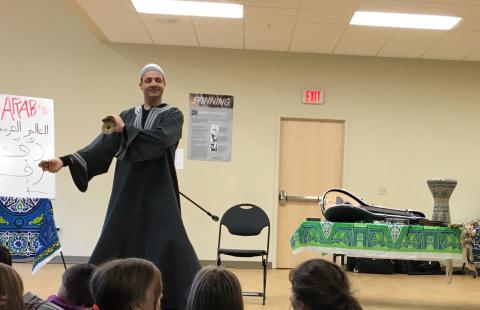What were the specific goals of this creative economy project? Describe the community development challenge or opportunity that your project was designed to address:
WCCMA's Youth Arts Enrichment Intiative's goals are to enable and encourage all youth to have access to quality arts education and music resources (including musical instruments). More specific to the HopStop Family Shows in Claremont, the goals were to create an introduction to the performing arts for ages 3 and up, and to gather the community together for live performing arts. There was a gap in programming in Claremont for this age group in particular that WCCMA did not have the capacity to reach. The Hop, their Community Venture Initiative (CVI) aims to increase the Upper Valley community’s engagement and access to Hop programming. CVI builds on the Hop’s commitment, over its 50-year history, to community-oriented programs involving a strong network of local organizational partners, as well as on ideas generated by the Hop’s Class Divide Project, a three-year initiative that examined socio-economic class via the arts. With this in mind, Claremont was a very clear area of interest for CVI programming.
If the goals change over time, please describe how:
The goals have remained the same, but they have broadened somewhat. We found that audiences shifted dramatically from program to program, occasionally drawing a small number of young children while attracting a large number of senior citizens. We asked ourselves the question of if this was a problem, or if this was just a part of the need in the community. In subsequent years, we have considered ways to make the intention of the program clear, while still welcoming anyone in the community. Occasionally we will have a senior citizen complain about the volume of the young participants, or how much they are running around. We are remaining true to the goal of connecting with young children and marketing the program that way, but allowing the organic audience to evolve with the needs of the community.
Who was involved in this project and what did they do? (be sure to include the partners from outside of the creative sector and how local voices were included):
The partners in this project are the Hopkins Center at Dartmouth College, the West Claremont Center for Music and the Arts, and Claremont Parks and Recreation. The Hop manages and funds the program, WCCMA is the Claremont coordinator (Hanover has a long running HopStop program fully coordinated by the Hop), and Claremont Parks and Recreation provide the facility and staff support at the Claremont Savings bank Community Center.
How does this project relate to a larger community development strategy?
For WCCMA this was an important way to expand community outreach without adding an overwhelming burden to the organization. The goal of the organization overall is to increase engagement, access, interest, and exposure to arts programs, but WCCMA has a very limited capacity. Without the partnership of Claremont Parks and Recreation it would not be possible to have a venue for programs of this size in the downtown area, and without the Hopkins Center there would be no way to fund or have the administrative support to have a program like this in Claremont. This partnership is an ideal connection of the strengths of 3 organizations, and a successful model of a truly collaborative program. All three partners communicate effectively, work well together, respect the expertise and ideas of the others, and as a result bring together the users of all 3 organizations - perhaps the most important goal of all three. Basically the collaboration brought the strategy of outreach to all in the community held by all three organizations to a new level in the Claremont area.
What projects or places, if any, inspired your approach to this creative economy project?
WCCMA has attended 3 years of CCX programs, 2 years of Idea Swap, and 6 years of other programs around Creative Community development by NEFA and the NHSCA. Many projects have included ideas or models that included some degree of government partnership, or wisdom reaching wider into the community for promoting organization awareness or collaboration. No one projects stands out as a close model, but two that spring to mind that have provided some thoughts and wisdom were RAMP in Bellows Falls, VT (a presenter at the North Adams CCX), and the Children's Museum of NH in Dover, NH (also a past CCX presenter).
